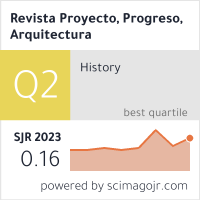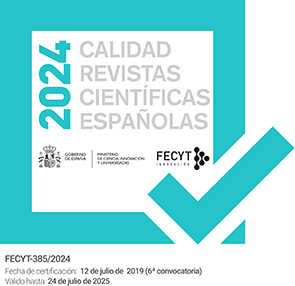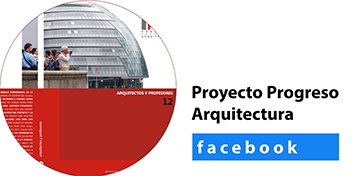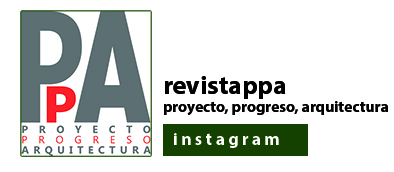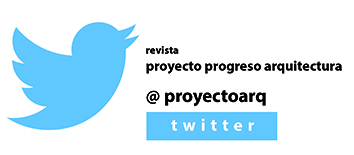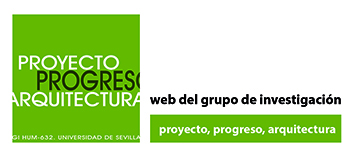USM HALLER: A PARADIGM OF SYMBIOSIS BETWEEN ARCHITECTURE AND INDUSTRY
DOI:
https://doi.org/10.12795/ppa.2024.i31.02Keywords:
Fritz Haller, prefabrication, Solothurn Schule, Konrad Wachsmann, ndustrial architectureAbstract
In 1961, Swiss architect Fritz Haller received the commission to design the USM steel profile production building in Münsingen (Switzerland). A collaboration was thus born that lasted for decades with the creation of three steel structure modular construction systems (MAXI, MINI and MIDI) and a line of furniture, designed by Haller and manufactured, marketed and sold by USM. USM-Haller systems are a successful example of collaboration with industry in developing prefabricated systems for the construction of buildings, both industrial and for other uses. This research compiles detailed information with regard to these construction systems, including the generation of new graphic information based on the data and drawings published in the period. With this, we assess the relevance of these designs within the architect’s career, as catalysts of the systemic and structural thought that he transferred to other scales and the scope of the research; as well as in the context of the architecture of the second half of the 20th century, in which the USM-Haller systems are an important contribution to prefabricated modular architecture.
KEYWORDS Fritz Haller; Solothurn School; Konrad Wachsmann; prefabrication; industrial architecture.
Downloads
Metrics
References
ANGÉLIL, Marc; HIMMELREICH, Jørg. Architekturdialoge: Positionen, Konzepte, Visionen. Salenstein: Niggli, 2011. ISBN 978-3-7212-0801-6.
ARRIBAS BLANCO, Ruth; Jean Prouvé y Konrad Wachsmann . Dos formas de utilizar la maqueta como herramienta de proyecto. En: Proyecto, Progreso, Arquitectura [en línea]. Sevilla: Editorial Universidad de Sevilla, 2016, n.° 15, pp. 56-69. [consulta: 30-09-2024]. ISSN 2173-1616. DOI: https://doi.org/10.12795/ppa.2016.i15.04.
DÍAZ SEGURA, Alfonso; MOCHOLÍ FERRÁNDIZ, Guillermo. Les Maisons Loucheur. La máquina para habitar se industrializa. En: Proyecto, Progreso, Arquitectura [en línea]. Sevilla: Editorial Universidad de Sevilla, 2012, n.° 6, pp. 34-49 [consulta: 30-09-2024]. ISSN 2173-1616. DOI: https://doi.org/10.12795/ppa.2012.i6.02.
DRACH, Angelika; HOVESTADT, Ludger. Intelligente CAD-Systeme : Instrumente für die Planung und Verwaltung komplexer Gebäude. En: Werk, Bauen + Wohnen [en línea]. Zúrich: Organ des Bundes Schweizer Architekten, 1992, n.° 79, cuad. 10: Fritz Haller, pp. 16-24) [consulta: 30-09-2024]. Disponible en: https://www.e-periodica.ch/digbib/view?pid=wbw-004%3A1992%3A79%3A%3A883.
GRASER, Jürg Martin. Die Schule von Solothurn: Der Beitrag von Alfons Barth, Hans Zaugg, Max Schlup, Franz Füeg und Fritz Haller zur Schweizer Architektur der zweiten Hälfte des 20. Jahrhunderts. Tesis doctoral. Zúrich: ETHZ, 2008. Disponible en: https://www.research-collection.ethz.ch/handle/20.500.11850/150915.
HALLER, Fritz. Allgemeine Lösungen in der Bautechnik. En: Bauen + Wohnen [en línea]. Zúrich: Organ des Bundes Schweizer Architekten, 1962, n.° 16, cuad. 11: Planen und rationelles Bauen, pp. 456-475 [consulta: 30-09-2024]. Disponible en: https://www.e-periodica.ch/digbib/view?pid=buw-001%3A1962%3A16%3A%3A1404#1405.
HALLER, Fritz. Fabrikhalle in Münsingen = Halle de fabrication à Münsingen = Factory shed at Münsingen. En: Bauen + Wohnen [en línea]. Zúrich: Organ des Bundes Schweizer Architekten, 1964, n.° 18, cuad. 10, pp. 394-401 [consulta: 30-09-2024]. Disponible en: https://www.e-periodica.ch/digbib/view?pid=buw-001%3A1964%3A18%3A%3A1290#1290.
HALLER, Fritz. Von Eigenschaften ausgezeichneter Punkte in regulären geometrischen Systemen. En: Bauen + Wohnen [en línea]. Zúrich: Organ des Bundes Schweizer Architekten, 1967, n.° 21, cuad. 11: Bauforschung, pp. 425-438 [consulta: 30-09-2024]. Disponible en: https://www.e-periodica.ch/digbib/view?pid=buw-001%3A1967%3A21%3A%3A1390#1390.
HALLER, Fritz. Totale stadt. Ein model. Olten: Walter Verlag, 1968.
HALLER, Fritz. Totale stadt. Ein globales model. zweite studie. Olten: Walter Verlag, 1975.
HALLER, Fritz. Bauen und Forschen. Dokumentation der Ausstellung. Solothurn: Kunstmuseum, 1988.
HERBERT, Gilbert. The Dream of the Factory-Made House. Cambridge: MIT Press, 1984. ISBN-e 9780262368018.
ICOMOS Suisse. System & Serie. Systembau in der Schweiz - Geschichte und Erhaltung. Zürich: GTA Verlag, 2022. Disponible en: https://www.system-serie.ch/.
JOEDICKE, Jürgen. Moderne Architektur: Strömungen und Tendenzen. Stuttgart: Krämer, 1969.
KLEMP, Klaus. The USM Haller Furniture System. Design Classics Series. Frankfurt: Verlag Form, 2002. ISBN 9783931317430.
MEDINA WARMBURG, Joaquín; LEOPOLD, Cornelie. Strukturelle Architektur: Zur Aktualität eines Denkens zwischen Technik und Ästhetik. Bielefeld: Transcript Verlag, 2012. ISBN 978-3-8376-1817-4.
PANCORBO, Luis; MARTÍN, Inés. Architecture as technical object. Industrial architecture of Albert Kahn. En: VLC arquitectura [en línea]. Valencia: Universitat Politècnica de València, 2014, vol. 1, n.° 2, pp. 1-3 [consulta: 30-09-2024]. ISSN-e 2341-2747. DOI: https://doi.org/10.4995/vlc.2014.2333.
SOLÉ BRAVO, Carlos. La casa de Norman y Wendy Foster en Hampstead. Tecnología y domesticidad entre los años 1960 y 1980. Tesis doctoral. UPM, 2017. Disponible en: https://oa.upm.es/45408/1/CARLOS_SOLE_BRAVO.pdf.
STALDER, Laurent; VRACHLIOTIS, Georg, eds. Fritz Haller. Architekt und Forscher. Zúrich: GTA Verlag, 2016. ISBN 978-3-85676-334-3.
USM. The history of a family business. Página web corporativa [consulta: 21 de agosto de 2024]. Disponible en: https://www.usm.com/en/office/about-usm/our-history-alt/.
WICHMANN, Hans. System Design: Fritz Haller Bauten - Möbel - Forschung. Basilea: Birkhäuser, 1989. ISBN 978-3-7643-2325-7.

Downloads
Published
How to Cite
Issue
Section
License
Las ediciones impresa y electrónica de esta Revista son editadas por el Secretariado de Publicaciones de la Universidad de Sevilla, siendo necesario citar la procedencia en cualquier reproducción parcial o total.
Salvo indicación contraria, todos los contenidos de la edición electrónica se distribuyen bajo una licencia de uso y distribución “Creative Commons Atribución-NoComercial-SinDerivar 4.0 Internacional” ![]() . Puede consultar desde aquí la versión informativa y el texto legal de la licencia. Esta circunstancia ha de hacerse constar expresamente de esta forma cuando sea necesario.
. Puede consultar desde aquí la versión informativa y el texto legal de la licencia. Esta circunstancia ha de hacerse constar expresamente de esta forma cuando sea necesario.
Los autores/as que publiquen en esta revista aceptan las siguientes condiciones:
- Los autores/as conservan los derechos de autor y ceden a la revista el derecho de la primera publicación, con el trabajo registrado con la licencia de atribución de Creative Commons, que permite a terceros utilizar lo publicado siempre que mencionen la autoría del trabajo y a la primera publicación en esta revista.
- Los autores/as pueden realizar otros acuerdos contractuales independientes y adicionales para la distribución no exclusiva de la versión del artículo publicado en esta revista (p. ej., incluirlo en un repositorio institucional o publicarlo en un libro) siempre que indiquen claramente que el trabajo se publicó por primera vez en esta revista.
- Se permite y recomienda a los autores/as a publicar su trabajo en Internet (por ejemplo en páginas institucionales o personales) antes y durante el proceso de revisión y publicación, ya que puede conducir a intercambios productivos y a una mayor y más rápida difusión del trabajo publicado (vea The Effect of Open Access).
- Abstract 253
- PDF - artículo (castellano e inglés) (Español (España)) 99
- HTML - artículo (castellano) (Español (España)) 44




